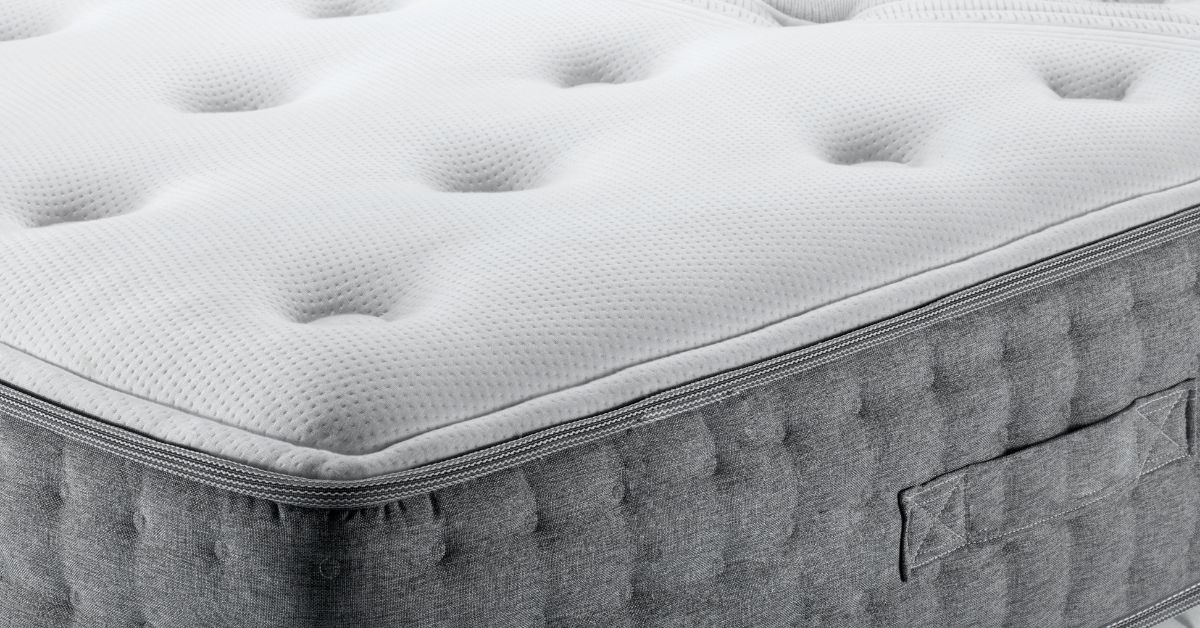
Why Do Some Mattresses Get So Hot? What To Know
Sleep should be a sanctuary of comfort, but for many people, the bedroom becomes an uncomfortable battleground against heat. You toss and turn, flip your pillow to the cool side, and kick off your covers, yet the warmth persists. The culprit often lies beneath you: your mattress. Understanding why some mattresses trap heat can transform your sleep experience and help you make more informed decisions about your next mattress purchase.
Heat retention affects millions of sleepers, creating restless nights and groggy mornings. A mattress’s materials, construction, and design play important roles in determining whether you’ll sleep cool and comfortable or wake up feeling overheated. We’re taking a dive into why some mattresses get so hot and what you need to know about getting a better night’s rest.
Does Mattress Material Impact Heat Retention?
Different mattress materials handle heat in dramatically different ways. Memory foam, while beloved for its pressure relief and contouring properties, traditionally struggles with heat retention. The dense cellular structure of memory foam limits airflow, causing body heat to become trapped within the material. This creates a warming effect that intensifies as you sleep.
Latex Mattresses
Latex mattresses offer superior breathability compared to traditional memory foam. Natural latex contains an open-cell structure that promotes air circulation, which allows heat to dissipate more effectively. The material’s inherent properties maintain a more consistent temperature throughout the night.
Innerspring Mattresses
Innerspring mattresses excel at temperature regulation due to their coil-based construction. The spaces between coils create natural pathways for airflow and prevent heat buildup. These traditional mattresses allow air to circulate freely, which makes them ideal choices for naturally warm sleepers.
What Construction Features Affect Mattress Temperature?
Mattress construction significantly influences heat retention beyond just materials. Open-cell foam structures promote better airflow than closed-cell alternatives. Manufacturers create open-cell foams with interconnected pores that allow air to move through the material, reducing heat buildup.
Layer thickness also affects temperature regulation. Thicker comfort layers tend to retain more heat as they create more material between your body and the breathable support core. Mattresses with thinner comfort layers often sleep cooler while still providing adequate cushioning.
Edge support systems can affect overall airflow patterns within the mattress. Well-designed edge support maintains structural integrity without compromising ventilation pathways that regulate temperature throughout the sleep surface.

How Bedding and Sheets Influence Sleep Temperature
Your mattress works in partnership with your bedding to create your sleep environment. Natural fiber sheets like cotton and linen promote breathability and moisture-wicking, maintaining comfortable temperatures. Percale weaves offer superior airflow compared to sateen weaves, which tend to trap heat due to their tighter construction.
Synthetic materials like polyester create additional heat retention issues. These materials often lack the natural breathability of cotton or linen and lead to increased warmth and moisture buildup during sleep.
What Room Temperature Works Best for Hot Sleepers?
Environmental factors significantly influence how your mattress feels during sleep. The National Sleep Foundation recommends keeping bedrooms between 60 and 67 degrees Fahrenheit for optimal sleep comfort. Hot sleepers may benefit from temperatures on the lower end of this range.
Humidity levels affect how your body perceives temperature and how effectively it can cool itself through natural processes. Maintaining humidity levels between 30 and 50 percent creates more comfortable sleeping conditions and reduces the perception of heat retention.
Do Body Weight and Sleep Position Affect Heat Buildup?
Individual factors contribute to how much heat your mattress retains during sleep. Heavier sleepers tend to sink deeper into mattress materials, creating more surface contact and potentially reducing airflow around their bodies. This increased contact can lead to more heat retention, especially with memory foam mattresses.
Sleep position influences heat distribution and retention patterns. Side sleepers often experience more concentrated pressure points and surface contact, while back sleepers typically have more even weight distribution. Stomach sleepers may face additional heat challenges due to increased torso contact with the mattress surface.
How Can Mattress Toppers Help With Temperature Control?
Cooling mattress toppers offer an affordable solution for addressing heat retention in existing mattresses. Gel-infused memory foam toppers combine the contouring benefits of memory foam with cooling gel particles that dissipate heat more effectively.
Latex toppers provide natural breathability and temperature regulation while adding comfort to firm mattresses. Natural latex’s open-cell structure promotes airflow and heat dissipation, making it an excellent choice for warm sleepers.
Breathable materials like bamboo fiber and eucalyptus-based fabrics in topper covers enhance cooling properties. These materials naturally wick moisture and promote airflow, creating cooler sleep surfaces.

What Advanced Cooling Technologies Are Available?
Modern mattress manufacturers incorporate sophisticated cooling technologies to address heat retention concerns. Copper-infused foams offer natural cooling properties along with antimicrobial benefits. Copper’s thermal conductivity moves heat away from your body more efficiently.
Active cooling systems represent the cutting edge of mattress temperature control. These systems circulate air or temperature-controlled water through the mattress structure by providing personalized climate control for your sleep surface.
Flexible Payment Plans Make Better Sleep Accessible
Investing in a quality mattress with advanced cooling features often requires a significant upfront investment. A mattress payment plan can make premium cooling technologies more accessible by spreading costs over manageable monthly payments. This approach allows you to prioritize your sleep health without compromising your budget—two things that matter greatly to your well-being.
Quality cooling mattresses often cost more than basic models, but their benefits justify the investment through improved sleep quality and long-term durability. Payment plans make these benefits accessible to more sleepers who value temperature control.
Why Does Breathability Matter for Temperature Control?
Mattress breathability forms the foundation of effective temperature regulation. Breathable mattresses allow air to circulate freely through their structure, preventing heat buildup and maintaining comfortable sleep temperatures throughout the night.
Moisture management works together with breathability to create comfortable sleep environments. Breathable mattresses wick away perspiration and allow it to evaporate, preventing the damp conditions that can make heat feel more oppressive.
Find Your Perfect Temperature
Understanding why some mattresses get hot empowers you to make informed decisions about your sleep environment. The combination of materials, construction, environmental factors, and personal characteristics all contribute to your mattress’s temperature performance. By considering these factors and exploring available cooling technologies, you will create the comfortable, temperature-controlled sleep sanctuary you deserve.
Quality sleep depends on finding the right balance of comfort, support, and temperature control. Shop with Grand Furniture for a mattress that suits your exact needs, and explore our flexible financing options. We believe you deserve a better night’s rest—take back your sleep today!


